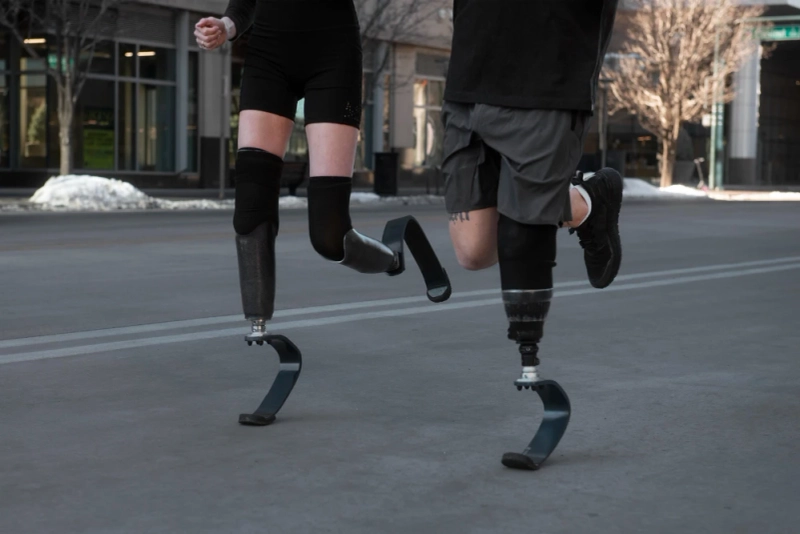We all know the fact that handling all the nuances of medical billing is a cumbersome affair and your orthotics billing is also not an exception to it, especially when you need to manage L-codes. These specific HCPCS codes enable you to describe the exact devices that you have given to a patient. However, many in-house orthotics billing teams actually struggle with these codes. Wondering why? The intricate nature of using L-codes elevates the scope of misuses for coders. A tiny error in using L-codes can lead your practice to encounter claim denials, payment delays and serious revenue leakage. To avoid mistakes in using L-codes, you must know what these codes are, how they matter in your billing, what causes the real confusion and proper measures to avoid mistakes in assigning L-codes.
What is L-codes in orthotics billing?
L-codes are special billing codes that you only need to use for the orthotics and prosthetics billing process. These L-codes allow you to define the devices that you have given. Some of these orthoses are knee braces, foot supports, or back braces. Each code gives details so the insurance company knows exactly what was provided. Some codes are for custom-made devices, while others are for ready-to-use ones. For example, L1833 is used for a prefabricated knee brace with adjustable joints. It may sound simple, but using the right code can still be tricky.
Now, you should know how these codes matter in your billing process and they create confusion.
Learn how L-codes matter:
L-codes tell the payer what device was given. But if you use the wrong or outdated code, it can cause trouble. The insurance company might deny the claim, delay payment, ask for more paperwork, or even start an audit. L-codes are like a billing language—if you don't use them right, things go wrong.
Factors that cause L-code confusions:
L-code confusion happens for many reasons. One big reason is a misunderstanding of product categories. Some devices look the same but belong to different codes. Here is a short example for you-a custom-fitted knee brace and an off-the-shelf one look almost the same, but still you need to use different L-codes to define them.
Another problem is poor documentation. Each code must be backed by clear paperwork. If your documents don't match the code, the claim may get denied—even if the device was delivered. This is extra important for custom orthotics, where you need to show details like measurements and how it was made. Missing modifiers is another issue. L-codes often need extra info like RT for right side, LT for left side, or KX to show documents are on file. If you leave these out, your claim might be rejected or underpaid. Also, codes change. CMS updates or removes codes every year. If you're not keeping up, you might use a code that's no longer valid, and such mistakes cause both time and money. Even your claims can be denied after providing the device to your patient. You fix it, send it again, and wait longer.
Here is a real-world example for you to make it easier for you to understand.
A real-world example of misuse of L-codes:
Imagine you give a patient a spinal orthosis. Your team uses L0648, which is for an off-the-shelf device. But the patient got a custom-made one. The right code should have been L0650. Your paperwork doesn't show that it was custom. So, the payer denies the claim. Now you have to again collect the accurate records, file an appeal, and wait for days. If the right code and proper notes had been used from the start, the claim could've been paid in just two weeks.
However, you can still avoid mistakes in your billing process by knowing the commonly misused L-codes and the proper measures to avoid L-code mistakes.
L-Code: What It's for and Common Error

Highly effective measures to avoid L-code confusion:
1. Streamline regular training sessions for your billing team:
Everyone handling your claims should know:
• What each L-code means
• How to use documentation to support codes
• When to apply modifiers
A trained billing team avoids guesswork, enabling your practice to catch mistakes before they cause denials.
2. Use Manufacturer-Supplied Crosswalks
Many orthotic device manufacturers provide L-code crosswalks. These crosswalks help you match the products to the right L-codes. Use them. But make sure they are updated and compliant with CMS guidelines.
3. Maintain Strong Documentation
This is the key. Your notes should include:
• Diagnosis justifying the need
• Detailed description of the orthotic
• Proof of fitting or customization
• Patient measurements
• Photographs or diagrams (if needed)
Make sure all your documents are audit-ready so that you can make your claims cleaner.
4. Stay Updated on HCPCS Guidelines
Check CMS updates regularly. Subscribe to newsletters from:
•CMS
• Durable Medical Equipment Medicare Administrative Contractors)
• American Orthotic and Prosthetic Association)
These sources announce code changes and new rules.
Managing L-codes can feel like trying to read a map in the dark. But you're not alone. Many practices now hand over their billing to experts who know the way. A professional orthotics billing company has experts proficient in handling all the nuances of billing, including recent code changes, paperwork, and mitigating the factors that lead your practice to face denials. They light the path so you can focus on caring for your patients while they take care of the twists and turns of billing.



